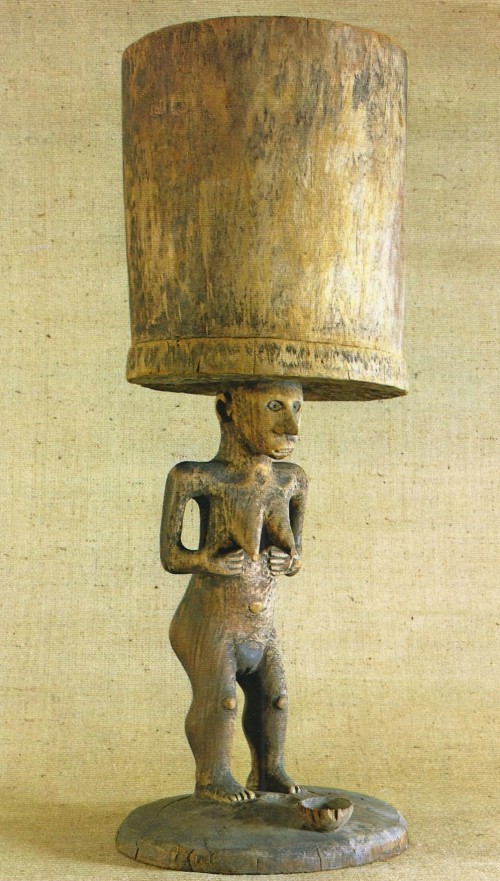
Specifications
- Height: 97,5 cm
- Material: wood
- Position:
- Gender:
- Indigenous name:
Provenance
Acquired through purchase Paul Wirz, 1919; Museum der Kulturen, Basel.
Publications
Ramseyer, Urs (1979), Indonesien, III/3
Additional information
Ramseyer quoting Drabbe (‘Het Leven van den Tanembereesch’, Internationales Archiv für Ethnographie 38 (1940) ‘(..) may be one of the ‘big drums’ thst were used in the old Tanembarese death ritual and were joined by small drums and a gong. At the beginning of a several-day-long death watch, offerings were made to the drum and the gong; then an experienced singer began a dirge celebrating the origins and life of the deceased. Unlike the conical hand-beaten drums, which could be played outside the limits of the village, the standing drum could only be played within the village and only for the duration of the death watch or as an accompanimant of the mbuki dance, which took place after a successful head hunt.’
Usually we find these drums with a pair of human legs and a penis supporting the drum. Here we see a quite realistic rendering of a woman supporting her breasts. An offering cup is in front of her.
Photo credits
Peter Holger, Basel.